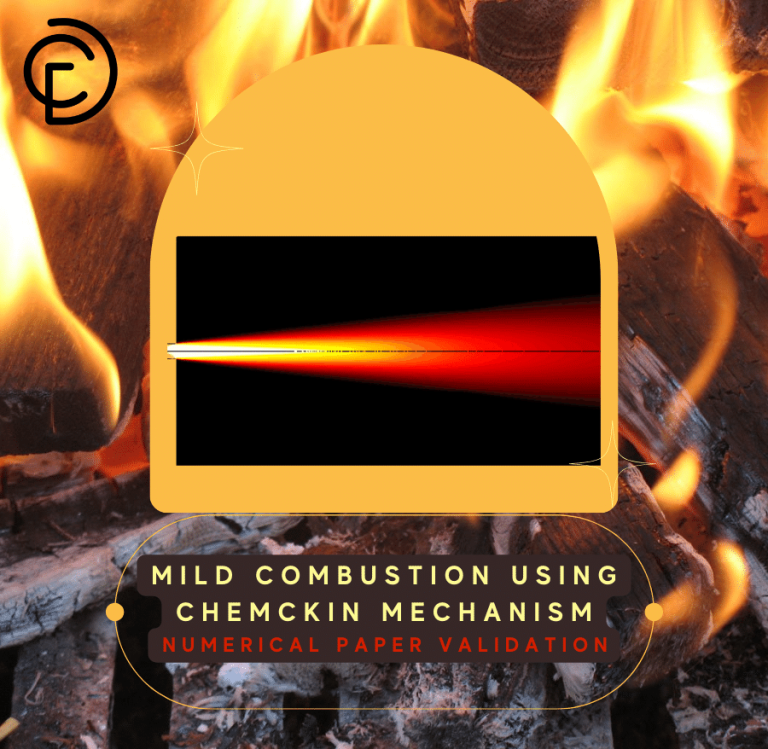Compressible Flow In Ejector-Diffuser System CFD Simulation, ANSYS Fluent Training
Compressible Flow In Ejector-Diffuser System CFD Simulation, ANSYS Fluent Training
- Upon ordering this product, you will be provided with a geometry file, a mesh file, and an in-depth Training Video that offers a step-by-step training on the simulation process.
- For any more inquiries regarding the product, please do not hesitate to reach out to us at info@CFDLAND.com or through our online support assistant.
€185.00 Original price was: €185.00.€135.00Current price is: €135.00.
Compressible flow in ejector-diffuser systems is essential in many engineering applications, especially in the chemical and aerospace industries. The interplay of high-speed primary and secondary flows, usually with varying pressures and velocities, is a complex fluid dynamic phenomenon. The flow’s compressible nature adds further complexity, such as expansion fans and shock waves, greatly impacting how well the system works. To efficiently design ejector-diffuser systems that transfer momentum and energy between fluid streams, it is imperative to comprehend and optimize these complex flow patterns. This CFD study concentrates on the compressibility of fluid flow as it moves through the ejector-diffuser.
Simulation Process
Figure 1 depicts the ejector-diffuser geometry. It is equipped with separate inlets for primary and secondary flows. Having meshed in ANSYS Meshing, it has converted to polyhedral elements in the solver, leading to 151516 cells. Species Transport model leads the simulation via consideration of all gases included. In the absence of a density-based solver, density formulation is governed by an ideal-gas model.

Figure 1: Schematic of geometry model
Post-processing
The simulation results depicted in the pressure and velocity contours provide valuable insights into the compressible flow behavior within the ejector-diffuser system. The pressure contour shows a gradual increase from the inlet (yellow) to the outlet (red), indicating pressure recovery in the diffuser section. A notable low-pressure region (green) is observed in the mixing chamber, which is crucial for entraining the secondary flow. The velocity contour reveals a significant flow acceleration in the converging section, reaching peak velocities (red) at the throat. This is followed by a gradual deceleration in the diverging section, as indicated by the transition from red to green and blue. The presence of high-velocity regions (yellow to red) in the mixing chamber suggests effective momentum transfer between the primary and secondary flows. These contours demonstrate the system’s ability to convert velocity into pressure, highlighting the key principles of ejector-diffuser operation in compressible flow conditions.
We pride ourselves on presenting unique products at CFDLAND. We stand out for our scientific rigor and validity. Our products are not based on guesswork or theoretical assumptions like many others. Instead, most of our products are validated using experimental or numerical data from valued scientific journals. Even if direct validation isn’t possible, we build our models and assumptions on the latest research, typically using reference articles to approximate reality.
Yes, we’ll be here . If you have trouble loading files, having technical problems, or have any questions about how to use our products, our technical support team is here to help.
You can load geometry and mesh files, as well as case and data files, using any version of ANSYS Fluent.
€165.00 Original price was: €165.00.€135.00Current price is: €135.00.

€195.00 Original price was: €195.00.€145.00Current price is: €145.00.

€135.00 Original price was: €135.00.€65.00Current price is: €65.00.

€240.00 Original price was: €240.00.€125.00Current price is: €125.00.

€240.00 Original price was: €240.00.€175.00Current price is: €175.00.

€310.00 Original price was: €310.00.€185.00Current price is: €185.00.






















Reviews
There are no reviews yet.